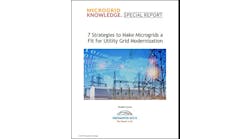Podcast: Play in new window | Download
When high winds knock out wind turbines supplying power to the grid, dual fuel diesel engines serve as an important line of defense against blackouts.
“Diesel generators can be structured to pick up in small areas, replacing wind energy,” said Jeff Powell, product manager for Fairbanks Morse Engine in this podcast. “For example, they can back up the large wind farms in the Midwest when there are tornadoes and wind turbines are hit or shut down. They’re not as easily affected by storms,” he said.
This scenario happens more and more frequently, and the diesel generators are often installed specifically to back up wind and solar power, which is boosting the market for the company’s diesel generators.
In addition, the company’s generators are more efficient than previous diesel engines and are dual-fuel systems, capable of using gas and diesel.
The demand for diesel to back up renewables is not the only factor affecting the market. So is the demand for dual fuel systems that use gas and diesel because natural gas and diesel are inexpensive right now, Powell said. EPA regulations calling for lower emissions are also boosting the market. “Many municipalities want natural gas,” said Powell.
In addition, the engines can be used in microgrids to back up renewable energy, Powell said.
Fairbanks Morse Engine provides application-specific fuel-flexible power systems for mission-critical applications. The applications include base load and standby power generation and emergency backup for nuclear plants; ship propulsion and shipboard power for the US Navy and Coast Guard and commercial vessels; and mechanical drive applications such as crude oil and water pumping.
The company began with the acquisition of a windmill company and Williams Engine Works in 1885 and in the past manufactured many products, including radios, washing machines, power motors, water heaters, air conditioners and storage batteries. Learn more at http://www.fairbanksmorse.com/








